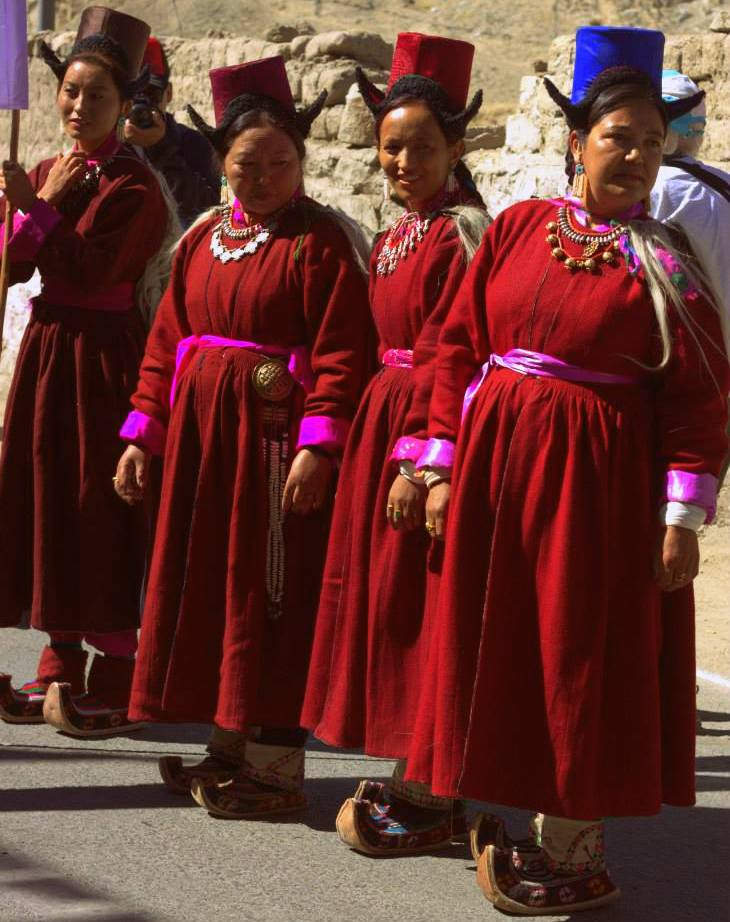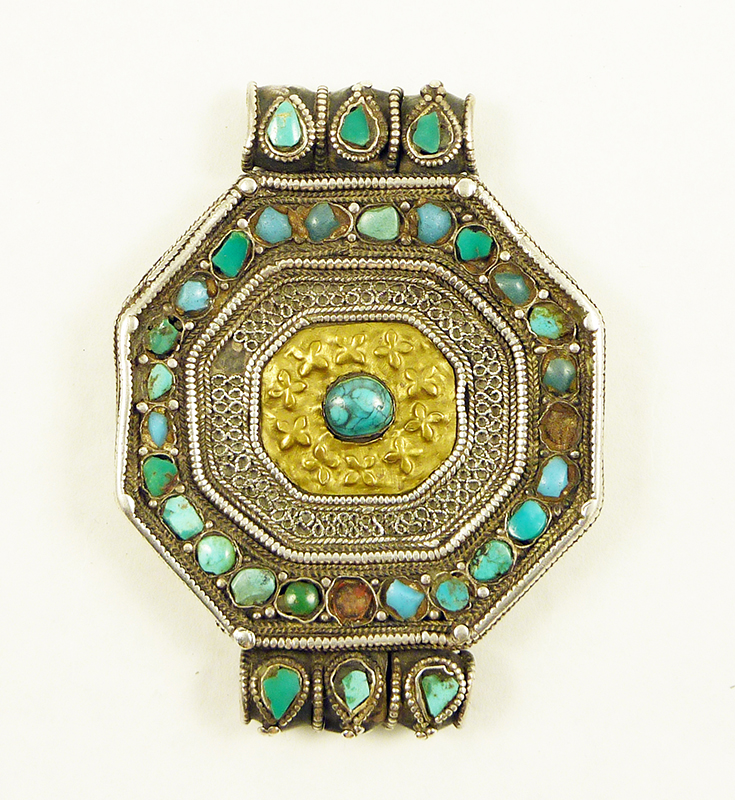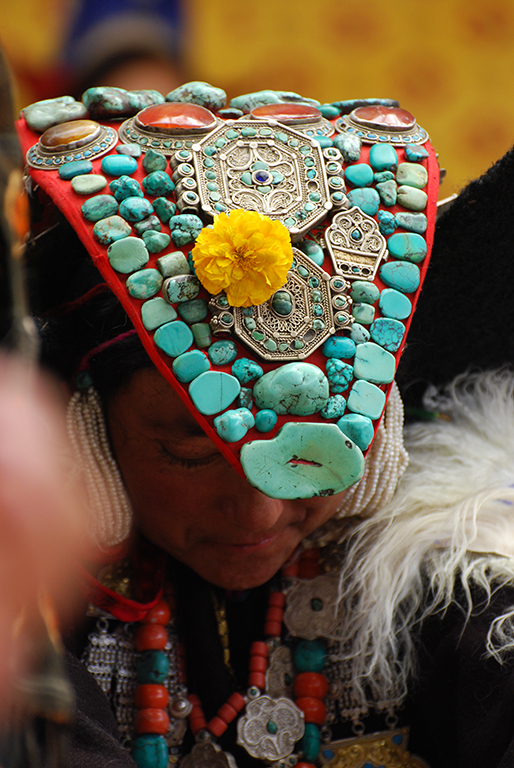It is always interesting to learn about different lifestyles and cultures of a place when you are travelling there. Ladakh, being one of the most fascinating cultures, is always a treat to learn more about! The fact that such a thriving bunch of people live at such high altitudes is amusing in itself. The climate of the place is known for being dry and mostly cold which calls for certain traditions and aspects of living that people from other climatic zones may not experience or even understand. Along with a rich history in trading and spirituality, the people of Ladakh have a heritage to be proud of!
Costumes of culture are unexpectedly very rooted in the history and lifestyles of its people. The threads and clinks of a piece of adornment speak more than words could about the customs, livelihoods, society and culture of a specific place. In this blog, we are going to discover some of the various dresses, textiles and jewellery that the Ladakhis adorn on a festive or day to day basis. When you visit a hotels in Ladakh, you may also see some of these textiles and intricacies in their decorative and interior elements. Some of these traditional dresses and jewellery are:
Goncha:
A thick woollen robe is also known as Kos or Sulma is the main attire worn by both men and women in Ladakh, though the kind worn by women is more flowy and pleated down the middle. It is a traditional gown worn along with various kinds of traditional accessories like Tipi (hat), Bok, shawl, Tsazar or Lokpa (thick woollen cloak worn only by Ladakhi women). A sash rich with several colours is tied around the waist on top of the Goncha.

The different divisions of Ladakh are the four different directions known as Shar (East), Lo (West), Nub (North) and Chang (South). And various communities and local tribes live in these regions following their own customs. The nomadic tribe Changpa is mainly based on the high Changthang plateau situated near the Chinese border to the East. Kos Kar, also known as Lawa Goncha is a prominent feature of Changpa clothing. It is a thick whitish robe made out of sheep wool and skin. Extremely warm and rugged, this is the only piece of clothing crucial for such extreme climates. Paired with their traditional animal skin shoes makes for the perfect outfit against the merciless cold and dry climate of the region.

Lokpa:
Lokpa is also known as Yogar is a unique garb worn by Ladakhi women over their shoulders. Made out of sheep wool and skin, it is truly distinctive to look at. The skin is facing outside with the woollen part facing the backs of the individual wearing it, making the piece of clothing extremely warm and cushioned. The outside part is adorned with silk brocading or accents of red and green which makes it look quite pretty. Earlier, women of Ladakh were socially required to wear a Yogar daily but now it is only used during festivals, marriages and gatherings.

Gau:
Sized like a fist, Gau or Kau is a piece of jewellery that women of Ladakh adore. Traditionally a hexagonal amulet of golden or silver metal, it is enamelled with pearls and precious stones with intricate detailing on the metal. A modern version is called Pema-lab-tse which is shaped like a butterfly and considered quite feminine and beautiful.

Perak:
A traditional headdress that is worn by Ladakhi brides that are beautifully embellished with turquoise, shells and corals along with many different precious stones. It stays on top of the bride’s head with black-coloured animal hair flaps reaching out to either side. The embellishments make it quite heavy. It is a symbol of status and prosperity for Ladakhi families and is usually passed down from and to females of the family.
Ladakh is vibrant with many such pieces of clothing, accessories and jewellery. So next time you plan a visit or stay in a hotels in Ladakh, make sure to keep your eyes out for such cultural pieces of decoration or adornment. If you visit during one of the many festivals Ladakhis celebrate with excitement, you may be able to experience the vibrancy in full swing

